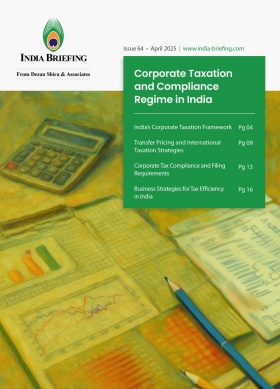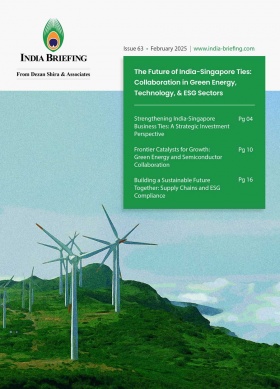Form CRL-1 Compliance Guide 2025: Navigate India’s New Subsidiary Layering Rules
The Union Ministry of Corporate Affairs (MCA) has issued a revised Form CRL-1, effective July 14, 2025, to enhance India’s corporate transparency and regulatory oversight. The update aligns with the Companies (Restriction on Number of Layers) Rules, 2017, and requires companies to disclose detailed information about their subsidiary structures.
India has amended the Companies (Restriction on Number of Layers) Rules, 2017, with the changes set to take effect on July 14, 2025. Through notification no. G.S.R. 427(E) dated June 27, 2025, the central government has replaced the existing Form CRL-1 with a revised version that requires companies to disclose more detailed information about their subsidiary structures and ownership patterns.
Under these rules, Indian companies cannot operate through more than two layers of subsidiaries, except in specific cases. The regulatory framework aims to discourage opaque ownership structures, reduce the risk of tax avoidance, and improve transparency. However, companies may avail certain exemptions—for example, for wholly owned subsidiaries (WOS) and foreign subsidiaries—if such structuring complies with the laws of the relevant foreign jurisdiction.
Form CRL-1 is a statutory filing under Section 230(1) of the Companies Act, 2013, typically submitted by companies seeking central government approval to convert into a Limited Liability Partnership (LLP). It serves as a formal application to the Registrar of Companies (RoC) and plays a key role in the legal process for corporate restructuring and conversions.
Understanding the latest revision
The updated version of Form CRL-1 expands the disclosure requirements for companies. Firms in India are now required to do the following:
- Provide layer-wise details of all subsidiaries
- Identify each subsidiary and its immediate holding company
- Include registration details, Corporate Identification Numbers (CINs), and shareholding patterns across the company subsidiary structure.
Prior to this amendment, the disclosure obligations only required reporting the total number of subsidiary layers and the number of entities in each layer without detailed ownership data. However, the revised format now demands a much more granular view of corporate ownership.
Regulatory and business implications of the revised Form CRL-1
The revised Form CRL-1 introduces mandatory, detailed, layer-wise disclosures, significantly enhancing transparency around how companies in India structure and control their subsidiaries. The amendment aims to detect irregularities and prevent the misuse of multi-tiered corporate frameworks, particularly those used to conceal beneficial ownership or facilitate circular shareholding arrangements.
However, this increased level of reporting presents operational challenges for regulators, who will need to handle larger volumes of data and invest in more robust systems and enforcement capabilities to maintain effective oversight.
For companies, the updated form is expected to enhance their credibility with investors, regulatory bodies, and other stakeholders. Entities with complex or multi-layered subsidiary networks must be especially vigilant. To comply with the updated rules, companies must adhere to the following:
- Maintain real-time, accurate subsidiary data
- Develop systems to monitor structural changes
- Ensure timely and complete filing of the revised CRL-1
Clear and compliant disclosures also help reduce exposure to regulatory risks and support long-term business resilience.
Subsidiary layering rules under Section 230(1) of the Companies Act, 2013
Section 230(1) of the Companies Act, 2013 governs corporate restructuring, including mergers, demergers, and conversions, such as into an LLP. Companies must apply to the National Company Law Tribunal (NCLT) and submit prescribed disclosures as part of the process.
The latest revision in Form CRL-1 aligns with the Companies (Restriction on Number of Layers) Rules, 2017, which limit the number of permissible subsidiary layers to prevent misuse of complex ownership frameworks. By integrating these reporting requirements into restructuring procedures, the updated form ensures companies maintain transparency and comply with layering restrictions during reorganizations.
FAQs on companies layering rules in India
1. What are the ‘restriction on number of layers’ rules in India?
Under these rules, an Indian company is restricted to a maximum of two layers of subsidiaries. However, this restriction does not apply to subsidiaries incorporated outside India, even if they exceed two layers, provided they comply with the local laws of the respective foreign jurisdiction.
The primary aim is to curb the misuse of corporate structures for unlawful fund diversion or regulatory evasion.
2. How is the number of layers calculated?
The terms of calculating company subsidiaries include the following conditions:
- A wholly owned subsidiary is not counted as a separate layer if it is part of the same group.
- Only distinct legal entities that fall within the corporate hierarchy are considered when determining the number of layers.
3. Are there any companies that are completely exempt from the layering restrictions?
Yes, the following types of companies are not subject to the two-layer subsidiary restriction:
- Banking companies as defined under the Banking Regulation Act, 1949
- Non-Banking Financial Companies (NBFCs) classified as systemically important under the Reserve Bank of India (RBI) Act, 1934
- Insurance companies governed by the Insurance Act, 1938 and the IRDA Act, 1999
- Government companies as defined under the Companies Act, 2013
4. Are there any structural exemptions for companies that are subject to the layering rules?
Yes, companies that fall under the scope of the layering restrictions can still avail certain structural exemptions:
- Foreign subsidiary exemption: Indian companies are allowed to acquire foreign subsidiaries with more than two layers, provided such structuring is permitted under the laws of the foreign jurisdiction.
- Wholly-Owned Subsidiary (WOS) exemption: One entire layer comprising wholly-owned subsidiaries is excluded from the count when determining the number of subsidiary layers under the rule.
5. What must companies do if they exceed the permitted number of layers?
Companies with more than the permissible number of subsidiary layers as of the commencement of these rules must file a Form CRL-1 with the RoC, providing the required details of the subsidiary structure. It is advisable to the companies to maintain the reduced structure, limiting the subsidiary layer to two.
6. What are the penalties for non-compliance?
Companies failing to comply with these rules are liable for penalties:
- An initial fine of INR 10,000 (US$116.7).
- An additional fine of INR 1,000 (US$11.67) per day for each day the default continues.
7. What information is required in Form CRL-1?
Form CRL-1 must include the following information of the company:
- Company name
- Corporate Identity Number (CIN)
Details of each subsidiary owned by the company, the following information should be provided:
- Name and CIN of the subsidiary
- Name and CIN of its holding company
- Layer-wise details of subsidiaries
- Information on immediate holding companies
- Ownership percentages at each level
- Registered office addresses
- Official email IDs of the entities involved
8. When must the revised Form CRL-1 be filed?
Companies must file the CRL-1 form within 30 days of any structural change in the subsidiary network. Companies must annually report the status of subsidiary layers, even if there are no changes.
9. How should companies file the revised form?
From July 14, 2025 onwards, Form CRL-1 filing must be done electronically via the MCA21 portal and must be digitally signed by an authorized person in the company.
10. Who must sign the declaration in Form CRL-1?
The declaration in Form CRL-1 must be:
- Digitally signed by a Director of the company
- Accompanied by the Director’s Identification Number (DIN)
- Authenticated using a valid Digital Signature Certificate (DSC)
(US$1 = INR 85.68)
About Us
India Briefing is one of five regional publications under the Asia Briefing brand. It is supported by Dezan Shira & Associates, a pan-Asia, multi-disciplinary professional services firm that assists foreign investors throughout Asia, including through offices in Delhi, Mumbai, and Bengaluru in India. Dezan Shira & Associates also maintains offices or has alliance partners assisting foreign investors in China, Hong Kong SAR, Vietnam, Indonesia, Singapore, Malaysia, Mongolia, Dubai (UAE), Japan, South Korea, Nepal, The Philippines, Sri Lanka, Thailand, Italy, Germany, Bangladesh, Australia, United States, and United Kingdom and Ireland.
For a complimentary subscription to India Briefing’s content products, please click here. For support with establishing a business in India or for assistance in analyzing and entering markets, please contact the firm at india@dezshira.com or visit our website at www.dezshira.com.
- Previous Article Tamil Nadu Permits 24×7 Business Operations: What Employers Must Know
- Next Article 美国关税将于 8 月 1 日恢复:印度力推平衡贸易协定








